Generally speaking, some of the most beautiful guitar chords are Major 9th chords, Minor 9th chords, Sus2 and Sus4 chords, Major 7/add 9 chords, and 13th chords. These include Cmaj9, Cmin9, Csus2, Csus4, Cmaj7, Cmajor/add 9, and Cmin13th chords.
Of course, what we define as a “beautiful chord” is largely subjective, but I think the list of chords shown below is worth looking into because you’ll get an idea of what’s out there. Let’s have a look at each of those chords, what makes them work, and how you can apply them to your playing.
Some of the Most Beautiful Guitar Chords
I’ll explain why they sound good, what they’re used for, as well as six different voicings for each chord, that way you really get an idea of how to play them in different ways.
In case you missed it, this is the exact same process I used in my article on the 12 main chords of the guitar. You may learn something from that article as well. All of these chords are free for to use without problem because guitar chords can’t be copyrighted.
1) Cadd9
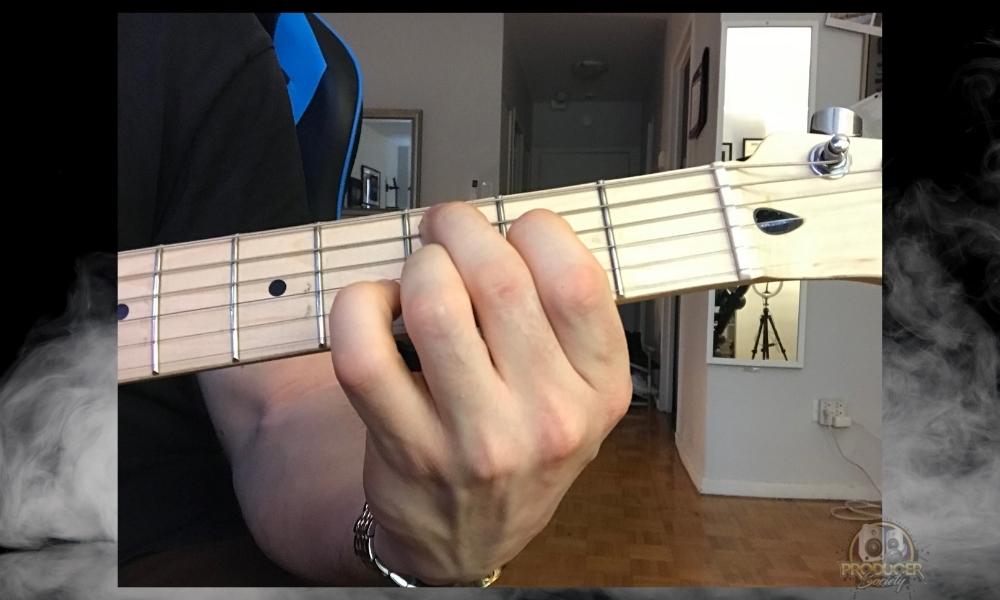
The C Add 9 is constructed of a Root, Major Third, Perfect Fifth, and a Major Ninth. The notes that make up the chord are (C-E-G-D). If you would like to see some Add9 chords in action, you could give Steely Dan’s classic “Peg” a listen.
I find that sometimes it helps to have a visual aid when learning to get some new chord permutations under my fingers.
If you would like an example of exactly how this chord works and its various voicings, then JamPlay has a great one.
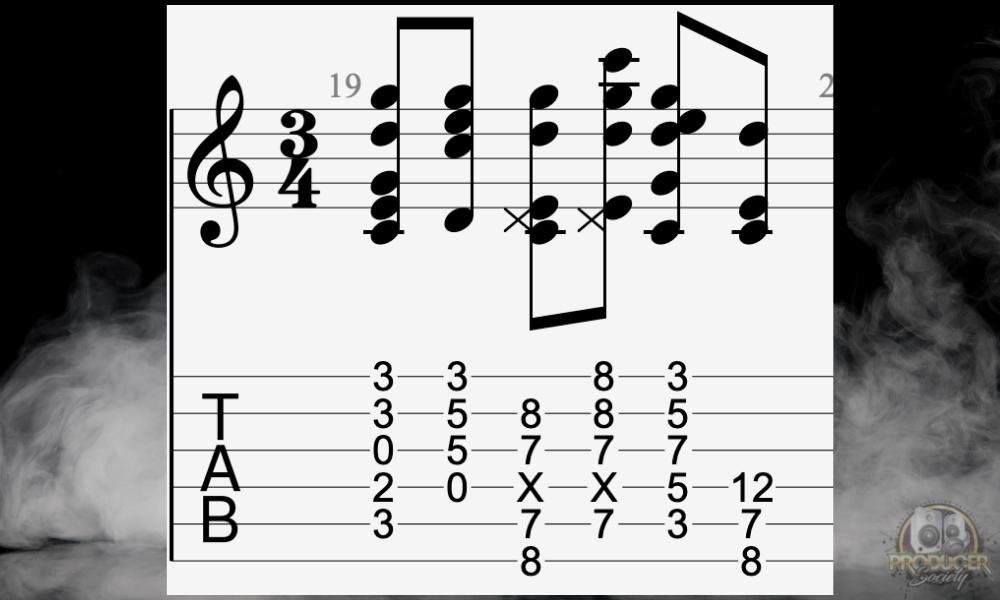
One thing I will say about the CAdd9 chord is that it’s different than the C Major 9 chord. Right off the bat, you’ll notice the name is different.
The difference between the Cadd9 chord and the C Major 9 chord, is that the C Major 9 chord also has a major 7th interval, while the Cadd9 doesn’t.
2) C Minor 9
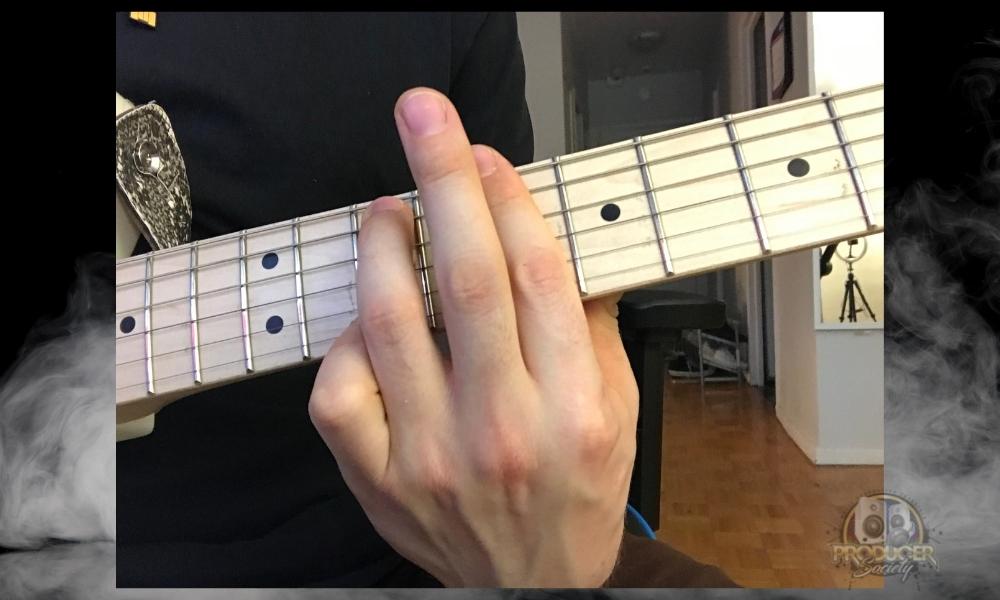
CMin9 contains the Root, Minor Third, Perfect Fifth, Minor Seventh, and Major Ninth. It has quite a nostalgic, dark, and emotional sound and can often be heard in Lo-fi hip-hop chord progressions. Its notes are C-Eb-G-Bb-D.
As a matter of fact, I used it as one of my favourites to use in my article on how to make beats. The minor9 chord is one of the most beautiful in my opinion, especially its many voicings which I’ve included in the image after the following 2 paragraphs.
Minor 9th chords can often be very ethereal and chill, so if you’re trying to get that vibe, a Minor 9th chord is a solid step in that direction. Especially when played before or after the Major 9th chord.
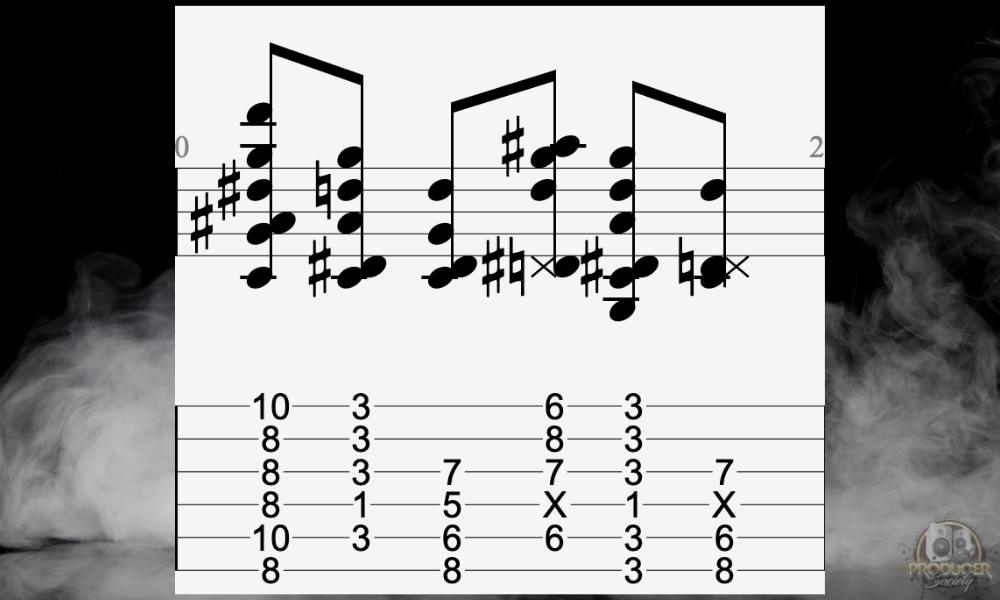
3) Csus2
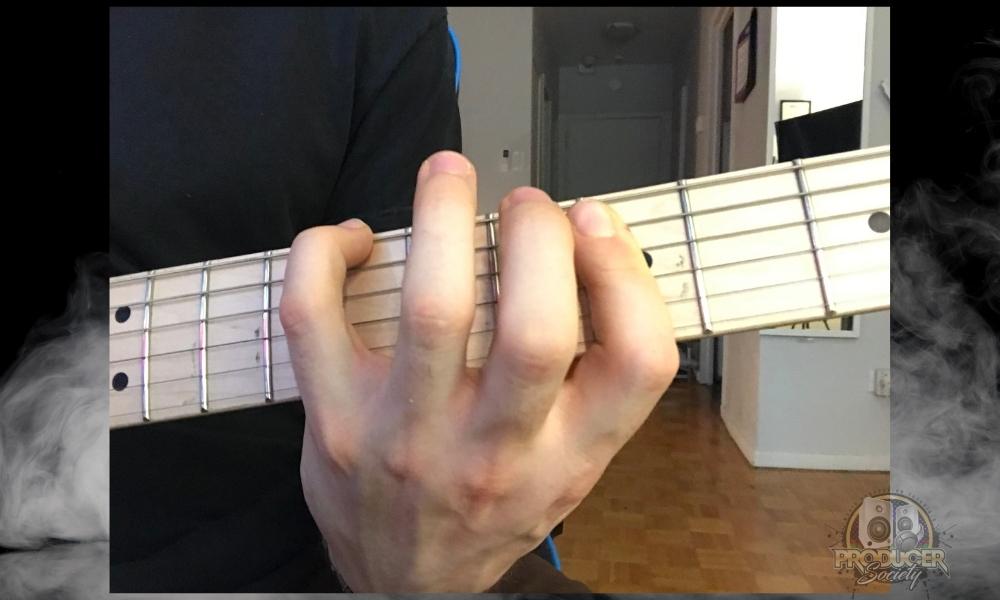
A suspended chord is called that because it does not have a third, and is therefore suspended. The chord is made up of the Root, Major Second, and Perfect Fifth. Csus2 is made up of the notes (C-D-G), and it can be heard in Robyn’s “Dancing on my Own.”
JamPlay is invaluable again for this purpose, and on this page, you can get a full breakdown of the chord, and its various voicings. Here are just a few for you to try out though:

Suspended chords, like add9 and minor9th chords, are incredibly beautiful and almost impossible to describe. Because of the suspended third in them, it’s almost as if the chord can go anywhere.
They exist in an interesting space between a major and minor chord. I learned a lot about these chord types when I took the Punkademic Music Theory Comprehensive Course via their All-Access Pass.
4) Csus4
![Csus4 - What Are the Most Beautiful Guitar Chords [ANSWERED]](https://travelingguitarist.com/wp-content/uploads/2022/04/Csus4-What-Are-the-Most-Beautiful-Guitar-Chords-ANSWERED.jpg)
Like Csus2, Csus4 contains no third, and the intervals making up the chord are Root, Perfect Fourth, and Perfect Fifth.
Like I was saying a moment ago, suspended chords tend to feel unresolved, and as such are a really great way to introduce tension into your music. The Csus4 includes the notes (C-F-G). Notice how it has the 4th in there, which, in this case, is F.

You can hear the tension created by sus4 chords on Gnarls Barkley’s “Crazy” as it moves from a Gsus4 and resolves to that G. Again, for an invaluable source on the chord voicings, I would check out Rick Beato’s video on suspended chords, as he does a great job of explaining them.
Additionally, I found this article from Flypaper “The Flurry of Harmonic Surprises in Gnarls Barkley’s ‘Crazy’ to be a fascinating read that really gives a thorough and deeply interesting breakdown of the harmony used by Gnarls Barkley.

I tend to like my extended chords to have a note in the bass because it makes them feel deeper and richer. If you’re playing with a bassist though, you’ll probably want to avoid this.
5) C Major 9 (C Major 7/add 9)
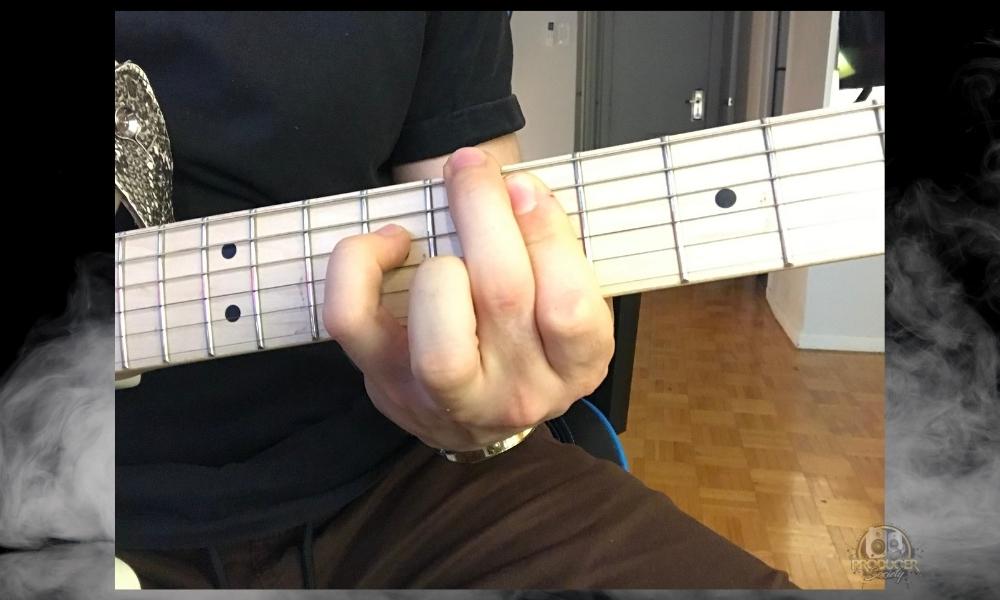
C Major7/add9 is a C major chord with a Major Seventh and an additional Major Ninth. It consists of the Root, Major Third, and Perfect Fifth, Major 7th, and a Major ninth. The C Major 9 has the following notes: C-E-G-B-D.
An example from the jazz world is Thelonious Monk’s “Monk’s mood”. Nowadays, you could easily find a chord like this in lo-fi, djent, and other kinds of progressive metal.
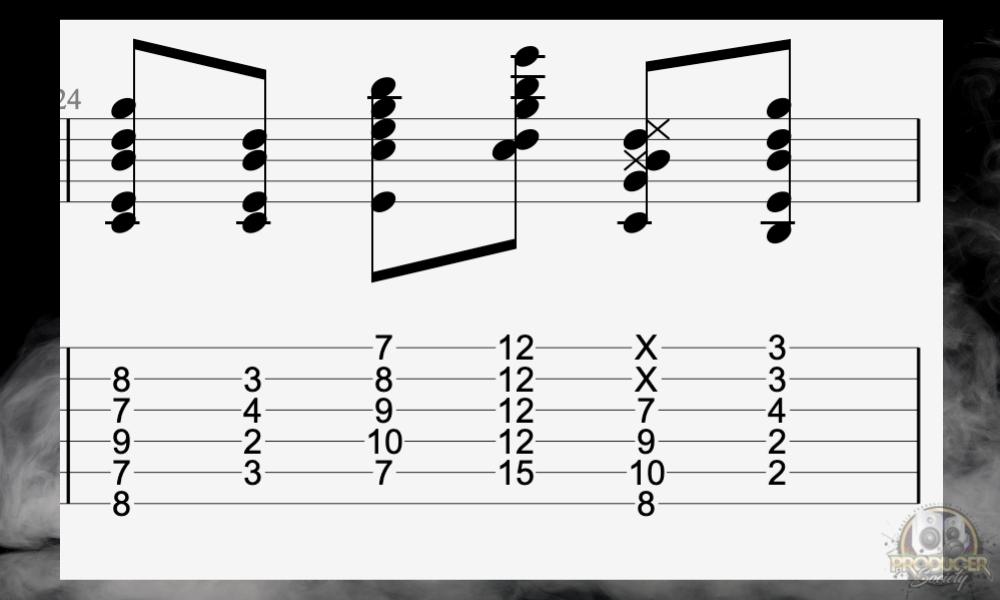
My favorite C Major 9 chord is the furthest one on the right, and then the one to its left in the image above. The first one is when I want a deeper one with more tone, whereas the one after it that starts on the B is more for a lighter vibe.
6) C Minor 13

The intervals making up the min13 chord are the Root, Minor Third, Perfect Fifth, Minor Seventh, Major Ninth, and Major Thirteen. The notes of Cmin13 are C, Eb, G, Bb, D, and A.
You can hear this chord in action in a number of Jazz standards. C minor 13 is a really common jazz chord, although it’s fairly hard to use if you’re not used to this kind of harmony.
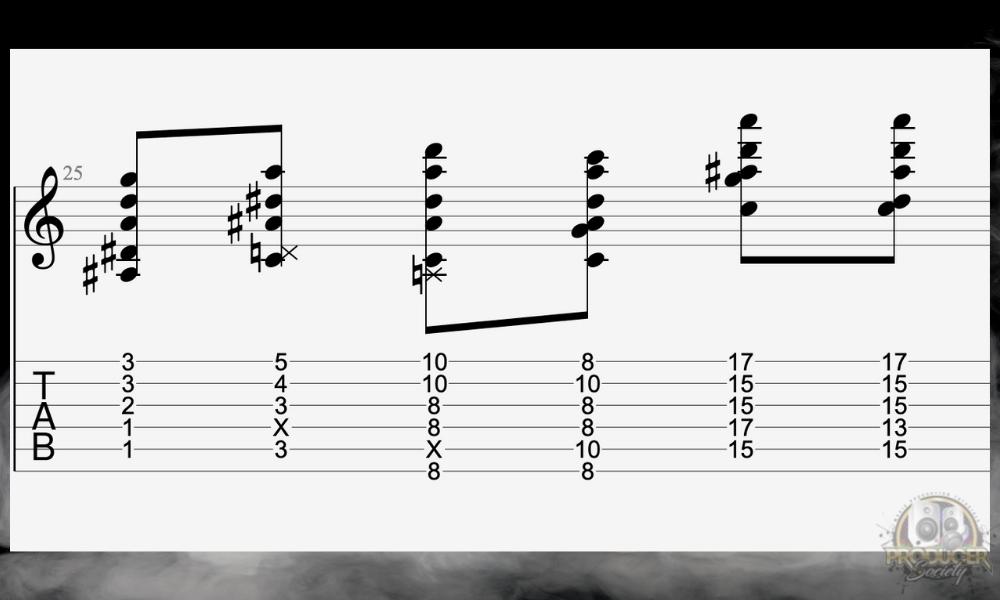
7) C Major 7
![C Major 7 - What Are the Most Beautiful Guitar Chords [ANSWERED]](https://travelingguitarist.com/wp-content/uploads/2022/04/C-Major-7-What-Are-the-Most-Beautiful-Guitar-Chords-ANSWERED.jpg)
The C Major 7 Chord takes that C Major triad and adds a Major 7th. The intervals making up the chord are Root, Major Third, Perfect Fifth, and Major Seventh. It is comprised of the notes (C-E-G-B).
C Major 7 is quite a warm-sounding chord, but also a little like it has been left open, almost a question. The Rolling Stones’ “Waitin on a Friend” is built around a Cmaj7 and many other classic songs are as well.
While it sounds fairly friendly and warm, the Major 7th chord often has a slightly dissonant quality to it on account of the Major 7th interval. I’m not the only one who thinks this either because Fender insinuates the same thing.
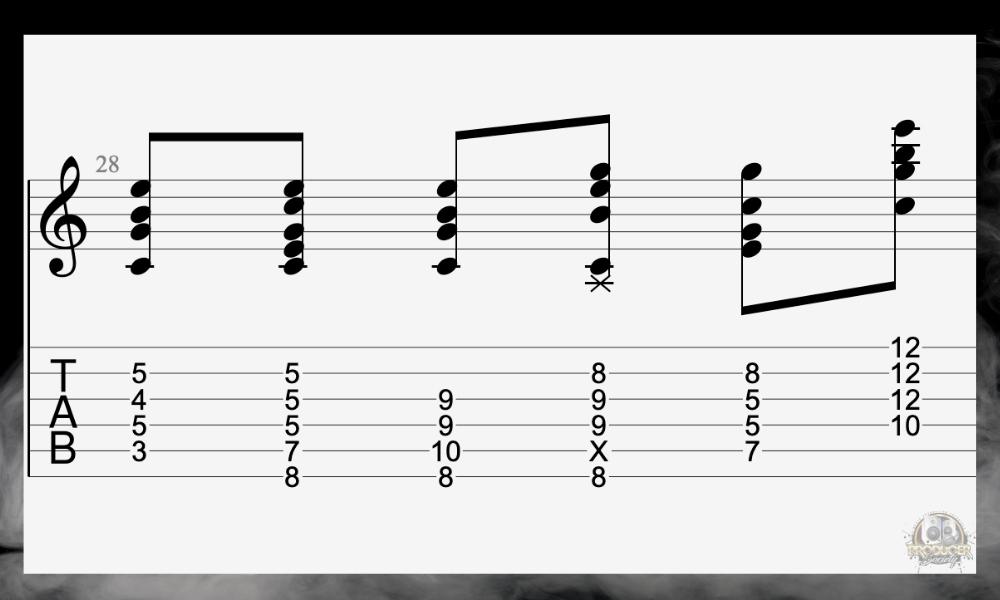
If I really think about it, the C Major 7 chord is probably my favorite chord of all time (any major 7 chords, is what I mean, by the way, and not just C Major 7).
![Mark Sarnecki's Complete Elementary Rudiments - Why Do Some Pianos Start With A C and Not an A [ANSWERED]](https://producersociety.com/wp-content/uploads/2022/03/Mark-Sarneckis-Complete-Elementary-Rudiments-Why-Do-Some-Pianos-Start-With-A-C-and-Not-an-A-ANSWERED.jpg)
They are great for funk, metal, pop, jazz, and pretty much any genre. It has a certain versatility to it. To learn more about the theory behind why this stuff works, my favourite books are Mark Sarnecki’s books (on Amazon) including the Answer Book.
How to Adapt These Chords to Different Scales and Key Signatures
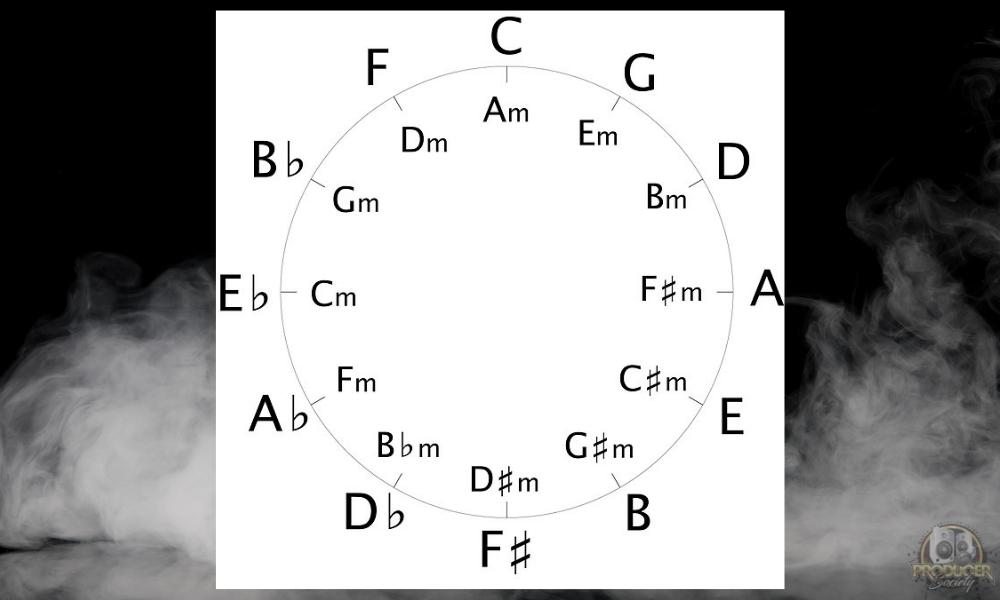
As you can see, all the chords are based around the scale of C. Fortunately, it is easy to move these chords into different keys and keys signatures. Following each chord formula will allow you to construct the chord in any key.
For example, if you wanted to play a CMaj7 in the key of G, the root would be G, the Major Third would be B, the Perfect Fifth D, and the Major Seventh F#. That said, if you really want to figure out chords for any key, it would probably be best to just google them, assuming you don’t know music theory.
The thing about chords is you can make them in the same exact way in all 12 key signatures and scales. It’s not hard to do.
I’d recommend getting a looper pedal like the BOSS RC-5 (on Amazon) which I have a thorough guide on. You can use these to practice your chords and similar music theory concepts which I explained in vivid detail in how to jam by yourself on guitar.
If you need more information on how to learn music theory, use the resources I’ve mentioned throughout this article which are also listed below. Additionally, if you need help, my music theory guide on Producer Society will walk you through the steps.
A Quick Word on Chords and Extensions
As I explained earlier, a player’s favourite chord depends on their taste, and much of it depends on the musical context as well. Some people even prefer not to use them as much as I showed here in this post.
One thing that is universal though is the need to add extensions and suspensions to chords in order to make them more colorful.
This is something that musician/composer John Walton from Symphonic Pops and Cinemagic Scoring said when my researcher reached out to him for a comment on this.

“Music, like most of life, alternates between sonic states of tension and resolution. This may be achieved by a variety of methods of which one of the simplest is to add extra notes to triads, thereby increasing the complexity of the sound and raising the aural tension – thus catching the interest of listeners.”
Each of the chords I mentioned at the start of the article are chords that we call extended chords. This means we take simple triad or chord shapes and add notes from the scale in order to extend or embellish them.
Important Things to Note About Guitar Chords
1) Beauty is in the Eye of the Beholder
Now I know I made claims about beautiful chords, but I reserve the right to say that beauty is in the eye of the beholder.
What works for your ear may not work for another. So, get out there and play. The only way you will know what works for your ears is if you start making a little noise.


 Written By :
Written By :
